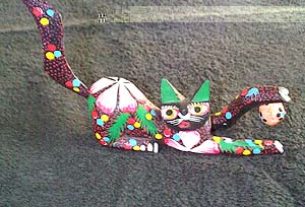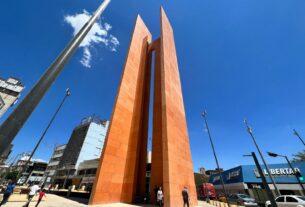Mexica/Aztec Calendar Systems
The Civil Calendar
The solar year was the basis for the civil calendar by which the Mexicas (Aztecs) determined the myriad ceremonies and rituals linked to agricultural cycles. The calendar was made up of 18 months, each lasting 20 days. The months were divided into four five-day weeks. The year was rounded out to 365 days by the addition of the five-day nemontemi (empty days), an ominous period marked by the cessation of normal activities and general abstinence. The correlation of dates in the Gregorian calendar is uncertain, although most authors on the subject affix the beginning of the Aztec year to early February. A variety of sources were consulted in developing the following chart of some of the ritualistic activities associated with each month.
| No. | Name of Month | Patron Gods and Rituals |
| I. | Atlacacauallo (ceasing of water) | Tlaloc, Chachihutlicue Children sacrificed to water gods |
| II. | Tlacaxipehualiztli (flaying of men) | Xipe-Totec Gladitorial sacrifice; dances by priest wearing the flayed skin of victims |
| III. | Tozoztontli (little vigil) | Coatlicue, Tlaloc Flayed skins buried, child sacrifices |
| IV. | Hueytozoztli (great vigil) | Centeotl, Chicomecacoatl Blessing of new corn; maiden sacrificed |
| V. | Toxcatl (dryness) | Tezcatlipoca, Huitzilopochtli Impersonators of these major gods sacrificed |
| VI. | Etzalcualiztli (meal of maize & beans) | Tlaloques Impersonators of water dieties sacrificed by drowning; ritual bathing and dances |
| VII. | Tecuilhuitontli (small feast of the lords) | Huixtocihuatl, Xochipilli Impersonators of the gods sacrificed; ceremony of salt workers |
| VIII. | Hueytecuihutli (great feast of the lords) | Xilonen Feast for godess of young corn, lords offer gifts and feast for commoners |
| IX. | Tlaxochimaco (birth of flowers) | Huizilopochtli All the gods festooned with garlands; feasting on corn-meal cakes and turkey |
| X. | Xocotlhuetzin (fall of fruit) Hueymiccaihuitl (great feast of the dead) | Xiuhtecuhtli Ceremonial pole climbing competition Sacrifice to fire gods by roasting victims alive |
| XI. | Ochpaniztli (sweeping of the roads) | Tlazolteotl Sweeping of house and roads; mock combat |
| XII. | Teoleco (return of the gods) | Tezcatlipoca Ceremonies welcoming gods returning to earth; ceremonial drunkeness, sacrifices by fire |
| XIII. | Tepeihuitl (feast of the hills) | Tlaloc Ceremonies for mountain rain gods; human sacrifices and ceremonial cannibalism |
| XIV. | Quecholli (precious feather) | Mixcoatl-Camaxtli Ritualistic hunt following fast; sacrifice of game and ceremonial feasting |
| XV. | Panquetzaliztli (raising of the banner) | Huitzilopochtli Homes and fruit trees decorated with paper banners; race-procession; massive sacrifices |
| XVI. | Atemoztli (water descends) | Tlaloc Festival honoring water gods; children and slaves sacrificed |
| XVII. | Tititl (streching) | Llamatecuhtli Sympathetic magic to bring rain; women beaten with straw-filled bags to make them cry |
| XVIII. | Izcalli (resuscitation) | Xiuhtecuhtli Image of god made from amaranth dough; feasting on tamales stuffed with greens |
| Nemontemi (empty days) | Five unlucky days; no rituals, general fasting |
Tonalpohualli – The Ritual Calendar
The tonalpohualli (count of days) was the sacred almanac of the Mexicas. This ritual calendar was registered in the tonalamatl (book of days), a green-fold bark paper or deerskin codex from which a priest (called tonalpouque) cast horoscopes and predicated favorable and unfavorable days of the cycle. The almanac year comprised of 260 days, each of which was assigned a date by intermeshing one of 20 day-signs, represented graphically with a gylph, and a number from 1 to 13, represented by dots so that no two days in the cycle could be confused. The almanac year was thus made up of 20 13-day weeks, with the first week beginning on 1-Crocodile and ending on 13-Reed, the second week running from 1-Ocelot to 13-Deaths’ Head and so on. A god or goddess was believed to preside over each day-sign, as shown in the following chart.
| Cipactli-Crocodile | Tonacatecuhtli- Lord of our Sustenance; male aspect of dual gods | |
 | Ehecatl-Wind | Quetzalcoatyl- Plumbed Serpent; god of knowledge and the priesthood |
 | Calli-House | Tepeyolohtli- Heart of the Mountain; jaguar god of the interior earth |
 | Cuetzpallin-Lizard | Huehuecoyotl- Old Coyote; back-biiter or mischief-maker |
 | Coatl-Serpant | Chalchiuhtlicue- Lady of the jade skirt; goddess of ground waters |
 | Miquiztli-Deaths’ Head | Tecciztecatl-He from the sea-snail; moon god |
 | Mazatl-Deer | Tlaloc- He who makes things sprout; god of rain and earth fertility |
 | Tochtli-Rabbit | Mayahuel- She of the maguey plant; goddess of pulque (maguey wine) |
 | Atl-Water | Xiuhtecuhtli- Lord of the year; fire god, patron of rulers |
| Itzcuintli-Dog | Miclantecuhtli- Lord of Mictlan (Region of the Dead);god of death | |
 | Ozomatli-Monkey | Xochipilli- Flower Prince; god of flowers and plants |
 | Malinalli-Grass | Patecatl- He from the Land of Medicines; god of medicinal plants |
| Acatl-Reed | Tezcatlipoca- Smoking mirror; major creator of god, god of fate | |
 | Ocelotl-Ocelot | Tlazolteotl- Eater of Filth; earth mother |
 | Cuauhtli-Eagle | Xipe- Totec- Our Flayed Lord; god of seeding and planting |
 | Cozcaquauhtli-Vulture | Itzapapalotl- Obsidian Butterfly; stellar and agricultural goddess |
 | Ollin-Motion | Xolotl- Double; Monster god, twin of Quetzalcoatl |
| Tecpatl-Flint Knife | Chalchiuhtotolin- Guise of Tezcatlipoca; god of night and the mysterious | |
 | Quiahuitl-Rain | Chantico- In the House; godess of the hearth |
 | Xochitl- Flower | Xochiquetzal- Flower of the Rich Plume; goddess of flowers |
Other Ancient Mexico Articles


